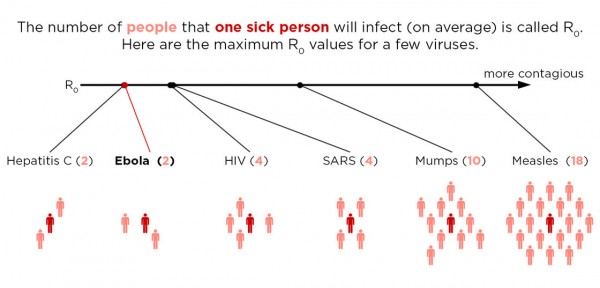Should Americans Be Afraid Of Ebola?
| Erika Villanueva | | Oct 03, 2014 07:00 AM EDT |
(Photo : NPR)
Reports of the first confirmed Ebola case in the United States incited unnecessary alarm after health officials sent the patient home only to quarantine him at the Presbyterian Hospital in Dallas when he started vomiting.
As it is common among many nationalities, the fear Americans have for the health and safety of their loved ones is normal following the news about the Ebola virus already on U.S. soil. Add to that the information from the World Health Organization (WHO) that estimated more than 70 percent of Ebola-infected patients in West Africa died.
Like Us on Facebook
Creepy? Scary? After all the hullabaloo, how come the doctors and the medical staff in charge of treating patient zero remain cool as ice?
According to a National Public Radio report by Michaeleen Douclef, the Ebola virus is less contagious than what most people think.
Compared to, say, HIV, SARS, Hepatitis C, Mumps and Measles, the Ebola virus is an amateur in terms of contagion and transmission rate. Douclef, in her report, said Ebola is the second least contagious.
In Douclef's chart, she showed six epidemics and their level of contagiousness. The top two epidemics on her chart were Measles and Mumps. So far, these two are the most catastrophic epidemics ever recorded in human history.
Coming in third and fourth place are SARS and HIV, respectively, while Ebola and Hepatitis C landed fifth and sixth.
How does one measure contagiousness? The report used R0 or R nought that indicates the level of transmission each virus has. The higher the R variables are, the higher the virus can jump from one carrier to another.
In the case of Ebola, Douclef's chart shows that it only has an R0 that range between 1.5 and 2.0. This means Ebola, as a transmitter, is not that very efficient.
No wonder the Centers for Disease Control and Prevention (CDC) did not go gaga and declared abomination on the American public when it announced the first Ebola case in the U.S.
They know. And there is no reason for them to panic.
CDC officials and members from Dallas know the nature of Ebola that is why they remained cool despite the slip-up of sending home Thomas Eric Duncan, the Liberian citizen who flew to the U.S. from West Africa with some Ebola souvenir.
"I have no doubt that we will control this importation, or case, of Ebola so that it does not spread widely in this country," CDC Director Tom Frieden said during an interview.
However, what people should worry about is the disease' fatality rate. Currently, the average survival rate of infected patients is at 50 percent.
According to the CDC, Ebola had infected nearly 6,000 people since 1976, where 3,385 have died so far.
Still, Americans need not panic. Having learned that it is not highly contagious as many have thought it was, plus the more advance healthcare system available in the U.S. will ensure the Ebola virus will not spread across the country.
TagsBiology, Microbiology, medicine, Ebola Virus Disease, transmission
©2015 Chinatopix All rights reserved. Do not reproduce without permission
EDITOR'S PICKS
-

Did the Trump administration just announce plans for a trade war with ‘hostile’ China and Russia?
-

US Senate passes Taiwan travel bill slammed by China
-

As Yan Sihong’s family grieves, here are other Chinese students who went missing abroad. Some have never been found
-

Beijing blasts Western critics who ‘smear China’ with the term sharp power
-

China Envoy Seeks to Defuse Tensions With U.S. as a Trade War Brews
-

Singapore's Deputy PM Provides Bitcoin Vote of Confidence Amid China's Blanket Bans
-

China warns investors over risks in overseas virtual currency trading
-

Chinese government most trustworthy: survey
-

Kashima Antlers On Course For Back-To-Back Titles
MOST POPULAR
LATEST NEWS
Zhou Yongkang: China's Former Security Chief Sentenced to Life in Prison

China's former Chief of the Ministry of Public Security, Zhou Yongkang, has been given a life sentence after he was found guilty of abusing his office, bribery and deliberately ... Full Article
TRENDING STORY

China Pork Prices Expected to Stabilize As The Supplies Recover

Elephone P9000 Smartphone is now on Sale on Amazon India

There's a Big Chance Cliffhangers Won't Still Be Resolved When Grey's Anatomy Season 13 Returns

Supreme Court Ruled on Samsung vs Apple Dispute for Patent Infringement

Microsoft Surface Pro 5 Rumors and Release Date: What is the Latest?















